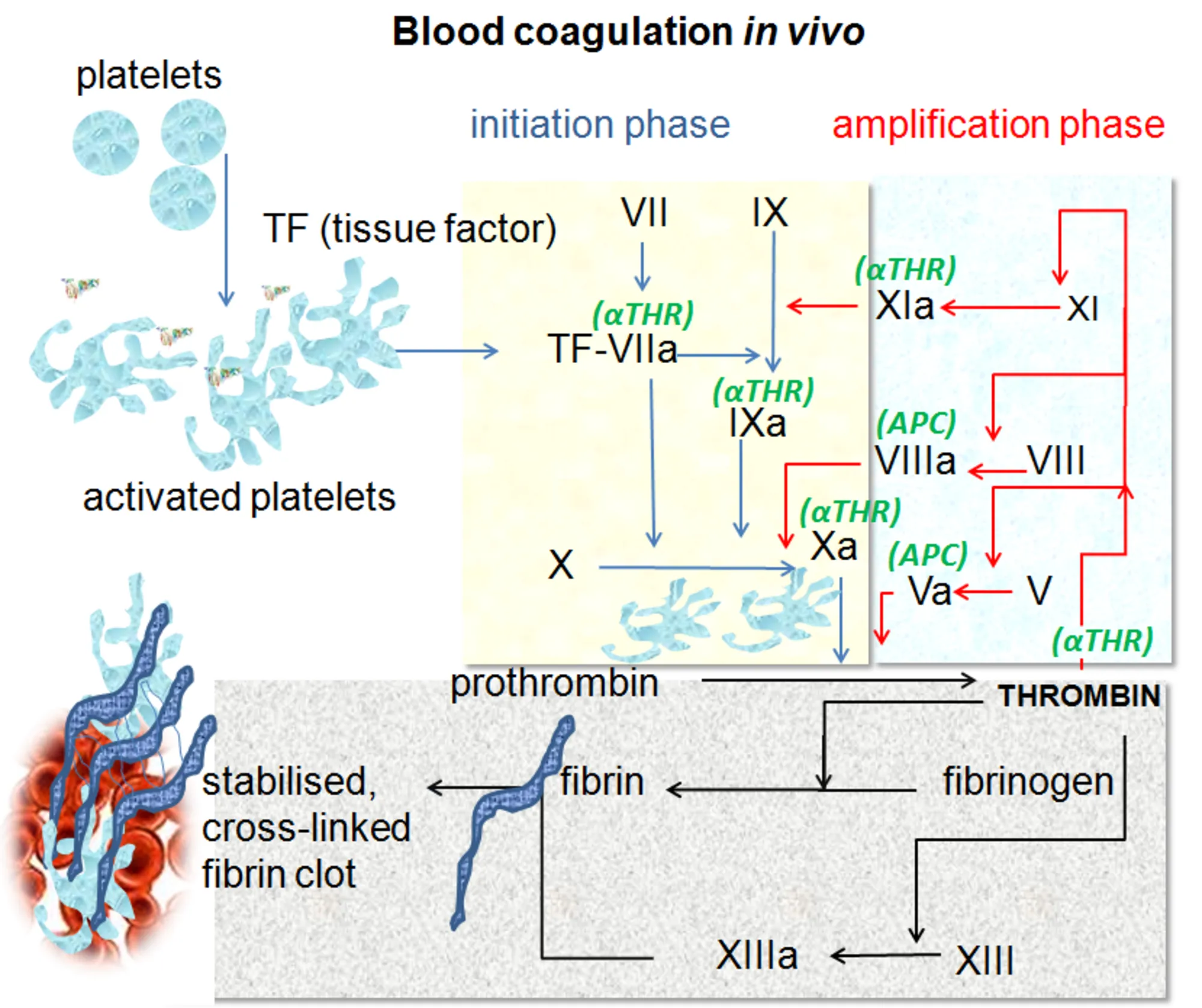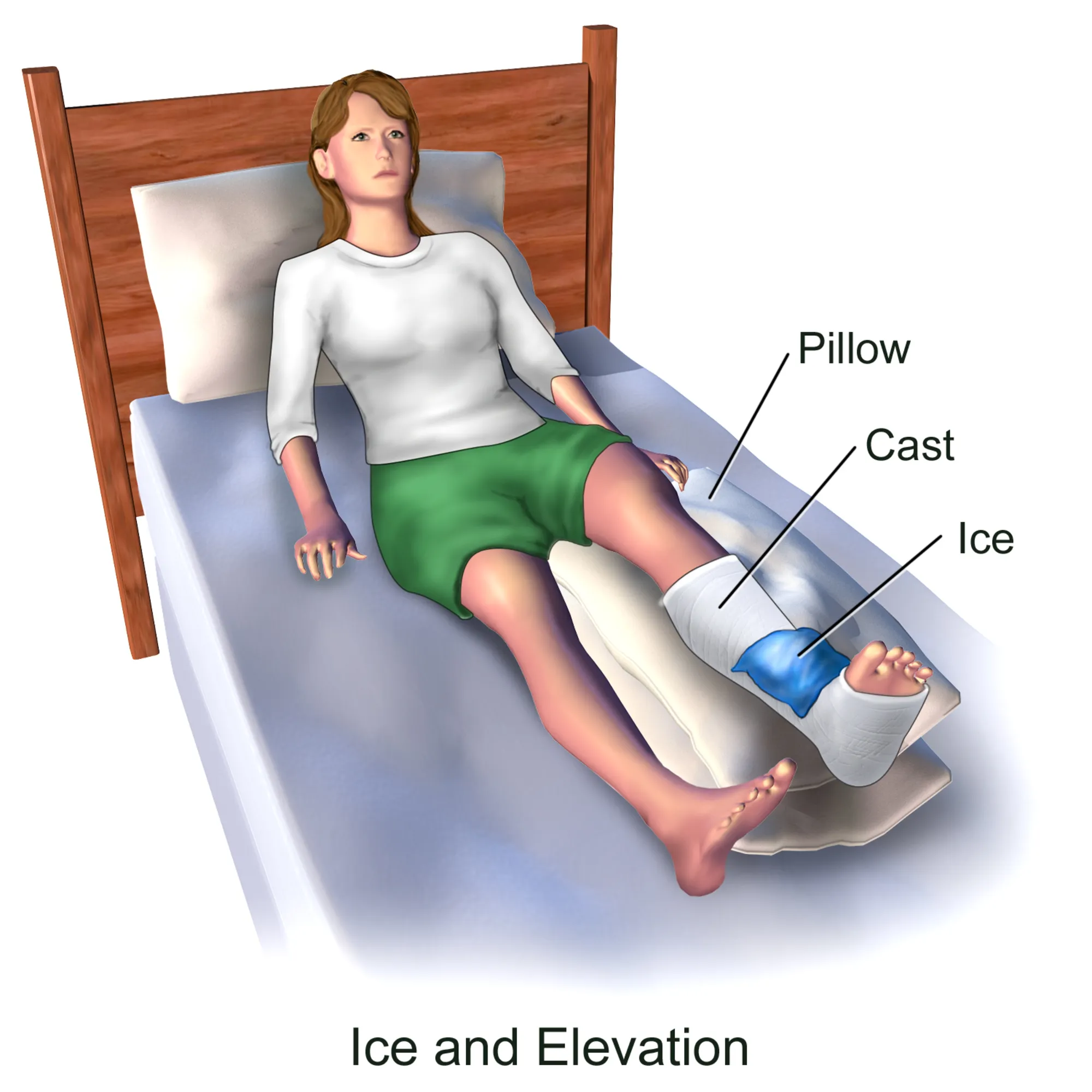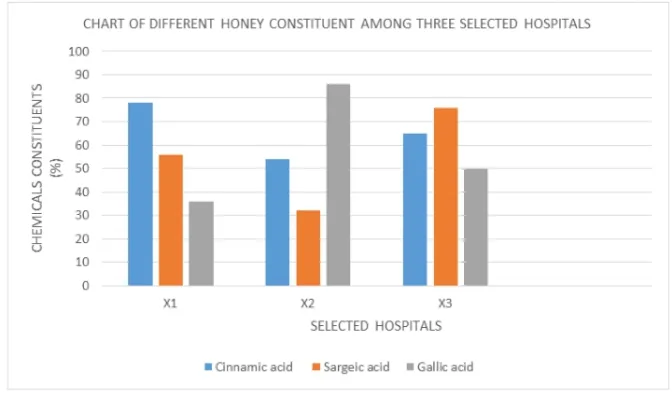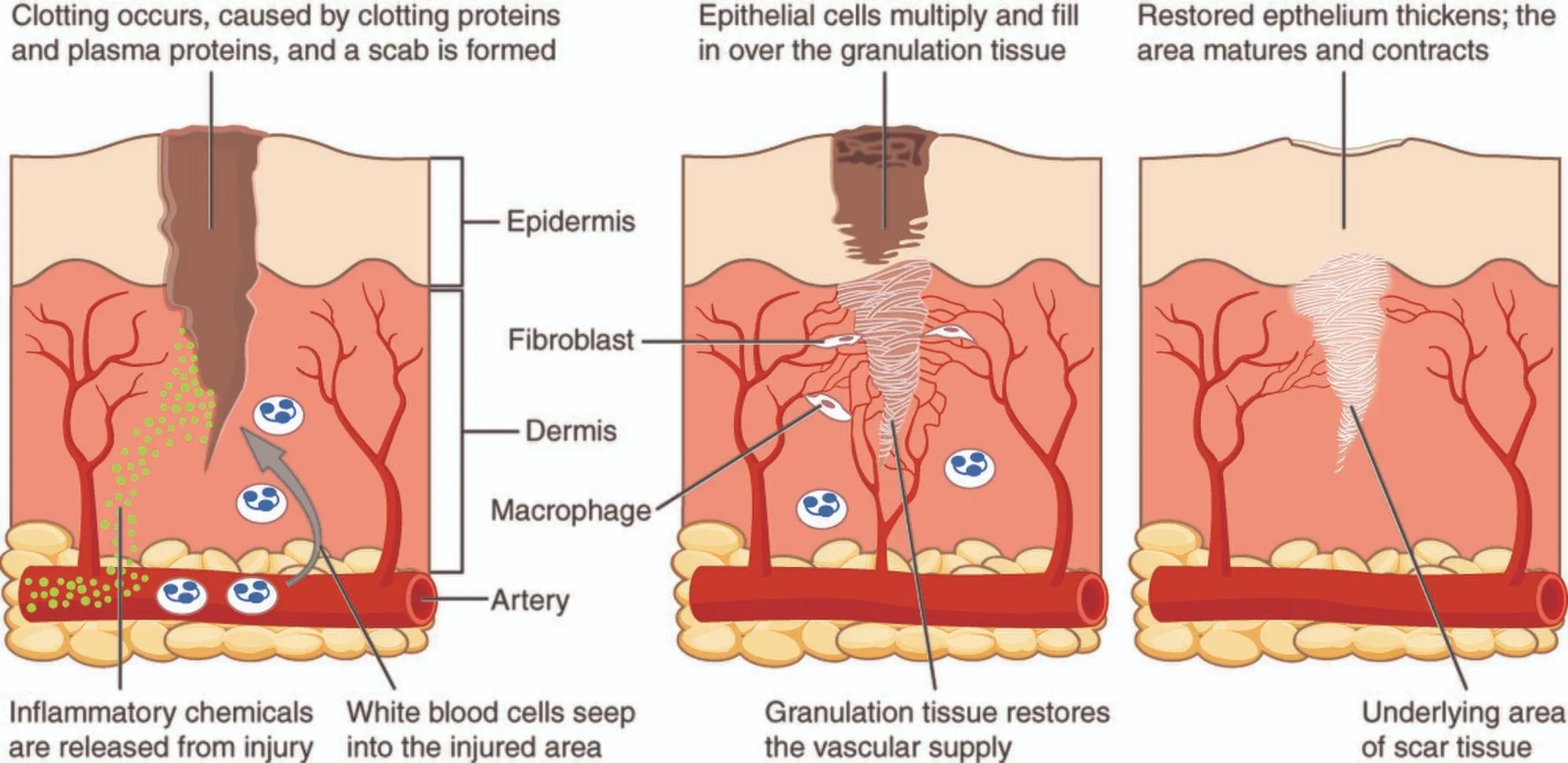Interestingly, there are some natural products a lot of individual really don't know much about, this is with respect to the potency of these natural products. Back in the olden days, one would argue that our forefathers lived more healthier than us. Most of the things they used were mostly natural without any form of artificially produced chemical substance.
Fast-forward to this new age, a lot of diseases have been reportedly ravaging human existence up to the point that even microbials are now forming resistance to therapeutic drugs. The issue of drug abuse and drug resistance is one of the major problem facing the health care system. We are gradually beginning to drift from the use of natural products to more of synthetic, probably simply because the synthesics are usually more attractive.
There are some disease or problem that actually needs just a touch of nature to restore to normalcy. Honey is one natural product that has been widely reported to have huge benefits to humans. They possess great therapeutic potency, anti-inflammatory powers, Antioxidant and above all, the ability to assist in rejuvenating damaged cells.
This research was done mainly to investigate some of the potency of honey and case in point l, its ability to heal skin and wound infection. This time around, our focus were hospitalized patients within few selected hospital in Nigeria. Let's begin the abstract and as usual, I will quote and elaborate on some areas when need be. Let's begin our discussion with the abstract of our work, shall we!
Abstract
The remarkable activity of honey varieties in inflammatory complications is increasingly favorable due to its ability to induce antibodies to produce cytokines (protein molecules that are involved in mostly involved growth and also play roles in cellular immunity) in eliminating bacterial infection and other related skin irritations. We investigated this assertion earlier documented in different studies about the potency of honey varieties in four selected hospitals within Nigeria. We also observed in this current work that the potency of honey obtained from different sources varied due to its composition of acids and proteins. Statistical technique, such as ANOVA was used to compare the mean difference of potency of honey in four selected hospitals within Nigeria. The test showed that the mean difference of the potencies of honey in three selected hospitals are not significant (P>0.05). The result of our invitro studies showed that honey had powerful antibacterial activities against different species of bacteria. We thus, concluded and suggested that among the countless varieties of honeys produced worldwide, some might have superior antibacterial activities that were yet to be discovered.
I would basically be limiting the discussion to the confirmed chemical composition of honey and why it very effective in prevention against microbials. We will look at its nature components in the context of how they are able effectively eliminate microbes which are the causative agents of infection. These microbes besides causing infection, prevent and slow wound healing and if they are not eliminated, they can cause increase in mortality rate.
Before we delve into discussing how honey plays crucial role in skin infection and wound healing, it is pertinent we understand the process of wound healing. By definition, wound healing is the process by which damaged tissues in a living organism are repaired through the replacement of the damaged tissues with a new one, it is as simple as that. It doesn't happen by magic, there are physiological processes that go on for it to occur. Anytime you are injured or recovering from infection that probably has wounds, has it ever occured to you how this processes occur. There are more to what you actually don't know. Reading this will put you ahead of others in knowledge. Let's get on with it shall we.
The process of wound healing also referred to as tissue repair is basically made up of four stages namely:
•Hemostasis (blood clotting) •Inflammation •Proliferation (growth of new tissue) •Maturation (remodeling).
The above must come into play in order for wounds to heal. Should there be any form of disruption to the process, it can results to delay in wound healing and if this happens, complications set in. The first stage which is Hemostasis (blood clotting mechanism) is made up of another substages that quickly act to arrest bleeding especially in cases that has to do uncontrolled bleeding. If the clotting mechanism is not initiated, wounds can never heal, so this is the reason why it is the very first thing that must happen before any other physiological process begin. In my previous article, I discussed about thrombosis (formation of blood clot inside blood vessels). Today we will now discuss how it happens externally. In Haemostasis, four things must happen and they are:
•Constriction of the blood vessel. •Formation of a temporary “platelet plug" •Activation of the coagulation cascade •Formation of “fibrin plug” or the final clot.
During the first stage of blood clotting system - Haemostasis, in a bid to arrest bleeding so that the patient doesn't pass our or loose excessive blood, the blood vessels that supplies blood to that region is restricted through a process called vasoconstriction (reduction in blood vessels internal diameter which leads to reduced blood flow). Once this is effectively done, next thing that happens is the formation of what is known as platelet plug. Recall from our previous article that platelets are mostly involved in coagulation processes, this time, they act to arrest bleeding.
In any case where an individual is lacking or has very low platelets concentration (thrombocytopenia), the chances of the wound healing process being delayed becomes very high. The alternative solution for these set of individuals would be to infuse them with platelets concentrates (This is just like transfusing blood to a patient but this time, you are giving the patient only platelets to enable the clotting process). When this is done, it is referred to as apheresis because you are giving the patient the major thing their body is lacking rather than just transfusing them with whole blood donates by others. This process in order words is strictly referred to as - platelet apheresis.
Now that the primary platelet plug has been formed, what next? The next thing that happens is the activation of the coagulation cascade system by different tissue factors. These stage is made of several clotting proteins known as clotting factors (Factors I to XII) that are produced by the liver and they all have different functions at every stage of the coagulation system. When any of these factors is lacking in an individual, it results to coagulation problem.
 The coagulation cascade system
The coagulation cascade system
For example, an individual that lacks factor VIII is associated with a blood coagulation disorder known as Haemophilia A while those that lack factor IX is associated with Haemophilia B (also known as Christmas disease). The consequences of lacking clotting factors like factor 8 and 9 is that, they can bleed to death. So in essence, these individuals try as much as possible to avoid any scratch or any form of injury that would result to bleeding. In a nutshell, the type of blood clotting factor lacking in an individual will determine the type of blood coagulation disorder the person has and also the type of treatment to be followed.
Coagulation cascade system is made of both extrinsic and intrinsic pathways that are both activated differently but both still in any case leads to the formation of a more stable fibrin clot which is the last phase of haemostasis. So in essence, platelets help to produced a primary barrier to bleeding while the coagulation cascade does the major job of producing a fibrin clot that helps in stabilizing the barrier and making them more stronger and permanent per say.
If this doesn't happen, bleeding ensues. The clot seals the injured area, control and prevent further bleeding while the tissue regeneration process (wound healing) takes place. There is a very interesting thing that happens along the line, once the injury starts to heal, the plug or fibrin clot formed gradually begins to slowly remodels, and it dissolves with the restoration of normal tissue at the site of the damage and before you know it, your skin all looks alike and over time, you might not even be able to pin point the exact spot you once had injury.
So after Haemostasis, what next? This brings us back to stages of wound healing. Since the blood flow has been arrested, the next stage of wound healing will be for the body to initiate the Inflammation process. Inflammation is actually a good response to tissue injury sometimes, reason being that, it allows the movement and release of inflammatory chemicals (chemicals that will activate the attraction of phagocytic cells to the site of injury e.g interleukin 6) and white blood cells (neutrophils - phagocytic in function, i.e eat up other abnormal cells through the process of phagocytosis) and proteins (epidermal growth factors needed for regeneration of new tissue) to the site of injury. What role do all these substances release play?
Have you ever asked yourself, people with internal injury and bleeding, how are the dead blood cells cleared? The released chemical substance and cells all work in unison in helping to clear out all dead cells as well as bacteria and any other possible foreign substance or pathogen from the site.
Anytime inflammation begins, the soldiers cells (white blood cells) of the body are triggered and through the process of diakineses, they migrate to the site of injury to do their job. The said white blood cells also release their own chemical that cause continual flow of blood to the injury site for protection. This is the reason why you observe the redness and warmth in area of injury. Note also that, the reason ice is used on players that have sustained injury in the field is to reduce inflammation and enhance quicker recovery since the injury was not an open one. The ice block will reduce the swelling and also limit the migration of white blood cells to the area of injury.
 Pain reduction with the use of ice
Pain reduction with the use of ice
If inflammation does not occur especially in an open injury, the chances of infection is high. So in essence, inflammation is protective in function. These is why whenever you are hurt or injured, a close examination of that area, you would experience these 5 cardinal features of pain - Calor (Heat), Dolor (Pain), Functio Leasa (Loss of Function), Rubor (Redness) and Tumor - (Swelling). I believe you now understand.
Note at this point that, it is not compulsory for you to feel all the above mentioned cardinal features of inflammation, it can actually go on saliently without your notice. After inflammation,the next stage of wound healing is the Proliferation stage (growth of new tissue).
Proliferation is the increase and growth of new cells. This is the actual stage that initiates the tissue repair and replacement of the damaged with new one through the action of endothelial cells which results to angiogenesis (development of new blood vessels to supply blood to the damaged region to Keep alive). There is also deposition of collagen (precursor for skin development), epithelialization (formation of new epithelial cells that gradually migrates to the top to protect the newly formed layer and finally there is wound Contraction.
During the stage of contraction, by mere looking at site of injury, you would visibly see it and that this stage, the possibility of scratching the area is high because of the mild discomfort it produces. This action is executed by a special type of muscle cells called myofibroblasts. They grip the edges of the wound during the process of contraction. After the whole processes, any cell that is no longer needed is marked for cell death and they consequently undergo apoptosis - natural cell death.
The last stage is the stage of remodelling (aka maturation). At this stage, the collagens are well realigned along tension lines and those cells that are also not needed ate eliminated though apoptosis. After all this stage, your skin or sure of injury is restored back to normalcy. With time the fully develops and match the normal skin colour of the individual. So those are the basic steps on how wound healing occurs and anything that can facilitate the process can be advantageous especially in cases of emergency and need for quicker recovery. This brings to back to our research topic.
Our research focused on studying the Healing Potency of Different Honey on Wound and Skin Infections Collected from Three Selected Hospitals in Nigeria. We aimed at finding out if there are difference in the potency of different varieties of honey by experimenting their potency on wound infection.
General overview of the Healing potency of honey and our research technique
Let's start with a general overview of honey's components and the roles they play. These substances are the power and engine room behind honey potencies.
Honey has its property and also varies in its chemical constituent on different types of varieties. It has remarkable effect and activity and has a lot of potent compounds used in the elimination of skin inflammation and wound complications.
Glucose oxidase which is one of the key component of honey is an enzyme that degrades glucose.
Glucose oxidase catalyses the oxidation of glucose to hydrogen peroxide. It is present in honey because the honeybees synthesize the enzyme and deposit it into the honey, where it acts as a natural preservative.
Honey provides glucose to leucocytes (white blood cells) which is essential for the respiratory burst (the rapid release of the reactive oxygen species, superoxide anion and hydrogen peroxide, from different cell types) that produce hydrogen peroxide which is suggested to give rise to its antibacterial activity and also possible elimination of microbes.
Many substances suspended in honey such as phenolic acids leads to its high acidic content and also increased pH. Amino acids (precursor for the synthesis of proteins generally) suspended in different honey varieties helps in regenerating tissues. If you would recall that amino acids are the building blocks or precursors for the synthesis of proteins in humans, so in essence it would be safe to say that, they play critical role in protein synthesis.
Since wound infection must be able to heal after eliminating of the microbials causing the infection (by actions of the phagocytic cells) and preventing it from healing, the presence of substance that contains the precursor for protein synthesis is just the perfect substance. Most people experience sharp pain after application of honey on affected lesions (infected or wounded areas), this is due to the acidic content of honey coming in contact with the nerve ending of the skin surface or lesions.
Research shows that different honey varieties have shown enormous potency in elimination of microbes such as bacteria and fungi with a distinction of proliferating cell tissue, regenerating tissue and also modelling of skin exposed surfaces. Cytokines are produced during wound healing process and also modelling such as clotting of blood as we have discussed above. Honey as an ant-inflammatory agent helps in slowing destruction to the cell and induces rapid and spontaneous healing process.
Proliferation of B-lymphocytes and T-lymphocytes in cell culture is stimulated by honey at concentrations low as 0.1%. In patients suffering from malignant wounds (of cancer origin), improvement with respect to wound size and cleanliness was seen after treatment with honey-coated bandages. Similarly, honey dressing quickened rates of healing in pressure wounds Honey has also been used to lessen foul odors emanating from wounds which cause a social barrier for patients and may lead to isolation. Therefore,gamma irradiation was introduced to destroy occasionally seen spores in honey, while having no adverse impacts on honey’s beneficial properties. In addition, honey dressing has economic advantages to the patient. Rapid healing reduces hospital stay and dressing material and surgical costs.
Results and findings
A total of 3 samples were used in order to assess their potencies respectively. Statistical techniques such as ANOVA is used to compare the Mean difference of the potencies of honey on wound and skin infections in three selected hospitals in Nigeria.
Table-1: Shows the phenolic acidic levels (percentages) of different honey obtained from three selected Hospitals in Nigeria and Applied on wound surfaces; as shown below ;

The test above is carried out as 5% level of significance F-ratio= 1.175, P- value or Ftabulated=6.93. The test above shows that the Ftabulated is greater than the F-ratio (Ftabualted > F-ratio)
We conclude that the mean difference between the healing potencies of different honey on wound and infection among three selected hospitals is not significant.
Table-2: An overview chart of different chemical constituent found in honey among three selected hospitals

Table-3: Shows the average composition of honey (in g)

Dicussions and Conclusion
In modern times, honey potency in medical field has been enormous in dealing with many wound and skin complication caused by microbes. Due to its acidic nature, many microorganisms are not seen wandering in its mixture but aids in elimination of certain microbes. Healing properties are in many areas even in traditional medicine for gastric ulcer and also in relieving pain. Manuka honey in recent times constitutes mostly of high acidic content, Jarrah honey is used in ant-fungal inflammation of skin and so on.
Similarly, skin and wound inflammation is caused sometimes by itching and also chemicals that are introduced on the skin surface. Many of skin dreaded diseases in some parts of the world may respond negatively to chemicals used on them for repair and possible healing process. Honey constitute of about 200 substances, including amino acids, vitamins, minerals and enzymes, but it primarily contains sugar and water. Sugar accounts for 95–99% of honey dry matter. The principal carbohydrate constituents of honey are fructose (32.56 to 38.2%) and glucose (28.54 to 31.3%) which speed the rate of healing due to its suspended acidic and chemical components. Medically, honey has been proven to eliminate microbes such as bacteria and fungi from the skin and also organ that have exposed lesion damages.
In conclusion, honey potency has shown increased distinction among other selected healing agents in the field of medicine. Production of hydrogen peroxide from glucose oxidase induces an enormous antibacterial properties found in honey which remove or sieve off bacteria. In field of medicine, honey has different varieties which show great potency on wound and skin inflammation.
There are countless varieties of honeys being produced worldwide, and some may have superior antibacterial activities. It can be concluded from in vitro studies that honey has powerful antibacterial activity against different species of bacteria. Many bacteria including aerobes (Those bacteria that require oxygen for growth) and anaerobes (They do not require oxygen for growth) are very sensitive to honey due to its acidic components. The substances which have about a pH of 6 and thus destroys most microbes.
Recent studies have assessed the useful and beneficial effect of honey on wound and skin inflammation with many methods that have been put in place to ensure proper use of honey varieties on wound and skin inflammation. Many possible finding and discoveries are still yet to unfold more of the healing potency of different honey and still require more of useful innovation and research inventions.
I Believe strongly that as more research and advancement continue in the area of medicine, more of the potencies of honey will be unraveled and harnessed in probably finding a permanent solution to antimicrobial resistance to synthetic drugs which Is now a major area of concern and problem with the currently used wide array of antimicrobials (drugs used in the treatment and eradication of microorganisms that cause infection in both humans and animals.
We can conclusively say that honey indeed has antimicrobial potency also aids in wound healing. In addition, there is not much of any clinical and significant difference in the different honey used for this research study with regards to their healing potency and constituents.
For details on the research methodology and full article download, these can be accessed here for free.
All images are free for use as the journal is an open access, just do well to reference us.
Thanks for reading
Until I come your way again.
References •Cardinal signs that you have an inflammation in Vacaville •Physiology, Haemostasis •The Five Cardinal Signs of Inflammation: Calor, Dolor, Rubor, Tumor … and Penuria (Apologies to Aulus Cornelius Celsus, De medicina, c. A.D. 25) •Glucose Oxidase in Honey •Hemophilia B •Blood Coagulation and Blood–Materials Interactions •The extrinsic pathway of blood coagulation •Traditional and Modern Uses of Natural Honey in Human Diseases: A Review
Return from Original Research: Evaluating the Healing Potency of Different Honey on Wound and Skin Infections Collected from Three Selected Hospitals in Nigeria to cyprianj's Web3 Blog




